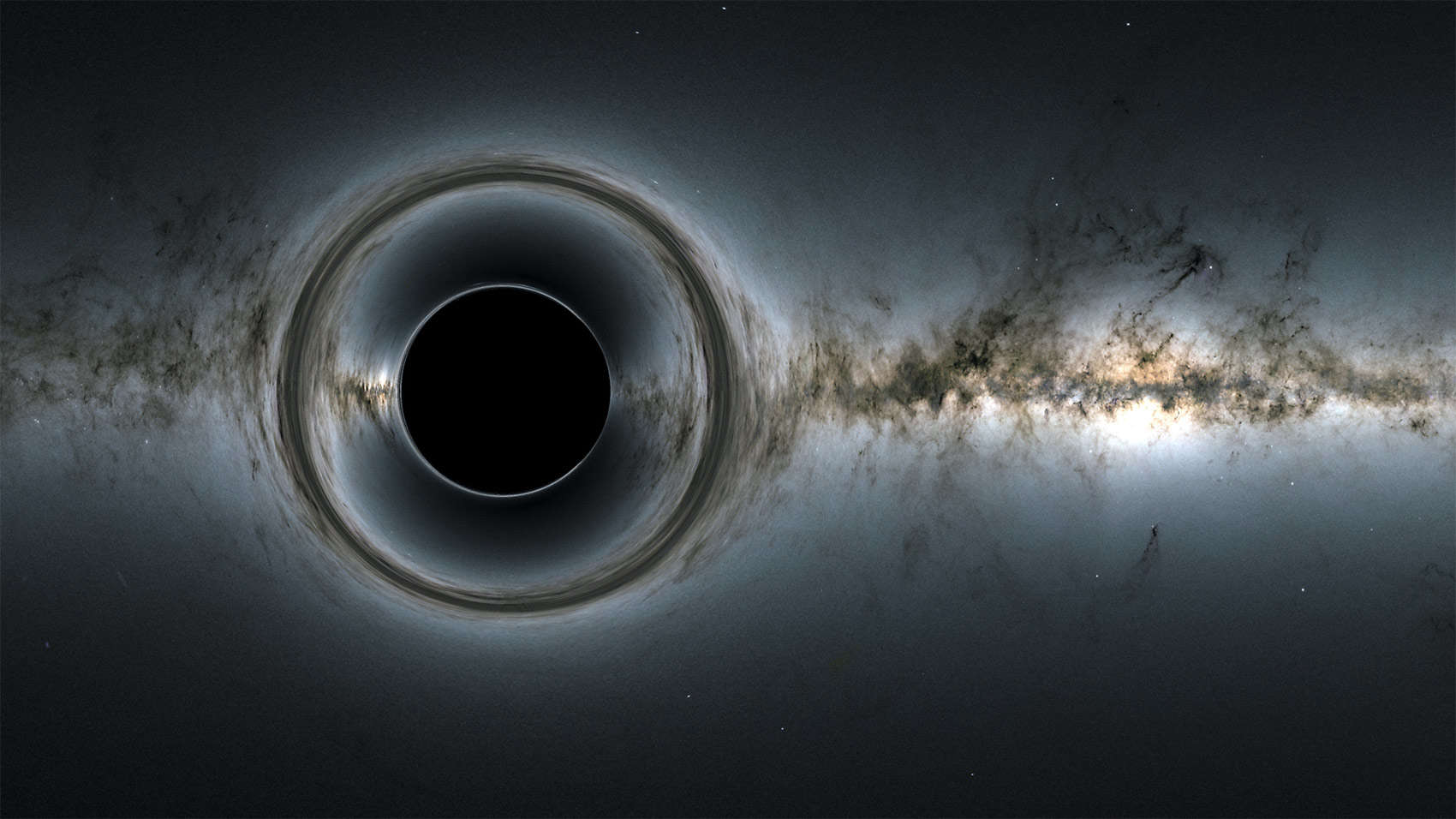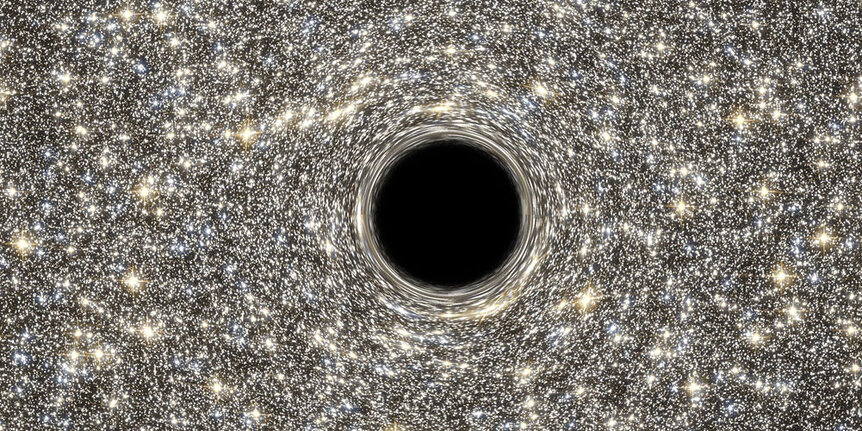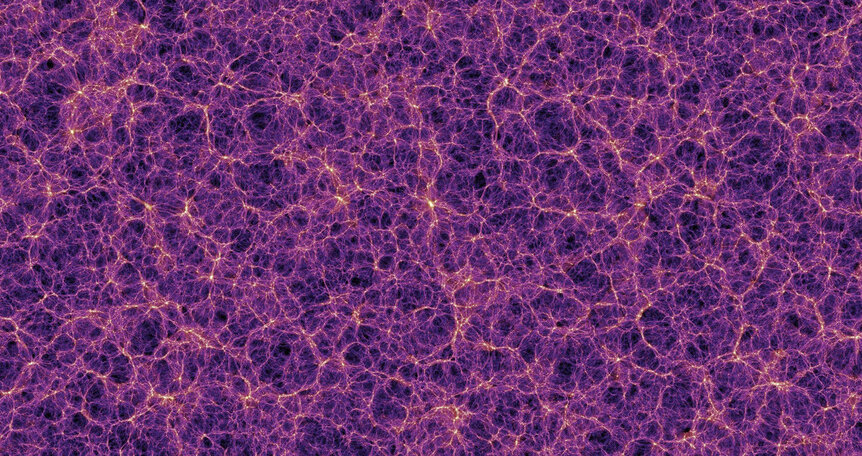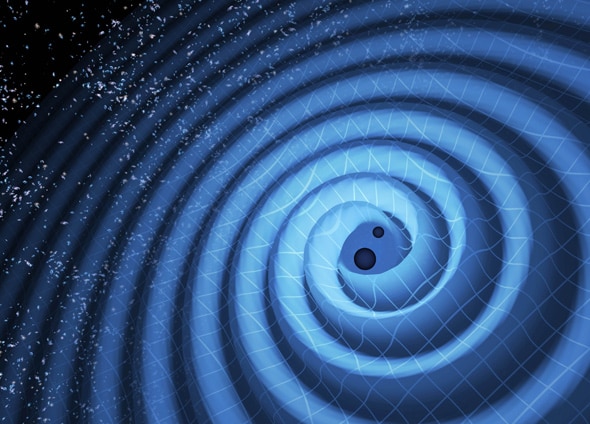Create a free profile to get unlimited access to exclusive videos, sweepstakes, and more!
Is dark matter made of black holes born at the dawn of time?
Dark matter may be ancient black holes, according to new idea.

Astronomers face a number of annoying problems we have with the Universe, and one of the biggest is dark matter.
Its existence was first hinted at in the 1930s, but it wasn't until the 1960s and '70s that astronomer Vera Rubin showed that galaxies appeared to have more gravity than their brightness suggested — in other words, they had more matter in them than what you see as stars and other visible matter. Since that time, this dark matter has been shown to exist in study after study, in fact 5 times more abundant than "normal" matter — the kind we're made of — and very few if any astronomers doubts its existence at this point.
But what is it? Observations ruled out faint stars, rogue planets, cold gas, and other objects that have mass but give off little light. Most scientists think it may be in the form of subatomic particles called axions, which are theorized to exist but have never been detected. It's a good working hypothesis, but as yet unproven.
At one point it was thought dark matter could be made of teeny black holes, ones with masses far less than Earth's, and so tiny they'd be difficult to detect. I've written about them before; they cannot be created in the Universe today but they may have formed in the early Universe. Very early, like a fraction of a millisecond after the Big Bang itself.
There are some problems with this specific idea, but the idea of black holes as dark matter is compelling. A team of astrophysicists has been looking into the possibility, and came up with a scenario they think solves a lot of problems with other dark matter hypotheses: In the first fraction of a second of the Universe's history, black holes were created in a wide range of masses, from roughly the mass of a decent-sized asteroid up to tens of millions of times the mass of the Sun. These are called primordial black holes, and the way these interact and behave then explains a lot of what we see in the cosmos today.
These black holes would've been created when the Universe was less than a second old. So much matter and energy were squeezed into such a small volume that relatively minor fluctuations in pressure could cause small regions to increase in density enough to form black holes. The very low mass ones formed first, with larger and larger masses following very rapidly. The biggest ones, with millions of solar masses, formed last, when the Universe was roughly one second old.
These black holes could affect other ones nearby, forming local pockets of matter called haloes. The most massive black hole in the region would fall to the center of the halo, and the other, smaller ones would orbit it. As they did they would naturally cluster up, forming binary systems, trinaries, and more.
Within moments, as normal matter (like protons, electrons, and so on) formed, it would fall in to these haloes. The biggest black hole attracted the most matter, and these became the seeds of galaxies today. The smaller black holes drew in less mass, forming stars, though ones we'd consider extremely massive today, with hundreds of thousands of times the mass of the Sun.
After that, things evolved pretty much according to the standard cosmology models we have today. But this idea explains some thorny issues with the standard model.
For one thing, we see extremely massive black holes, with billions of times the Sun's mass, in galaxies called quasars at the edge of the observable Universe. We see some quasars that are so far away that the light that reaches us left them when they were less than a billion years old. It's very hard to form a supermassive black hole in so short a period according to current models, and this has been quite hard to explain.
But the new model accounts for that naturally; the supermassive black holes we see didn't start from scratch. They started as primordial black holes that already had high mass, so they could easily grow to the enormous sizes we see a billion years after the Universe formed.
We know essentially all big galaxies have supermassive black holes in their cores, and a lot of characteristics of a galaxy seem to scale with the size of that black hole. This has been hard to explain as well, but again the idea of primordial black holes solves this naturally; for example a bigger early black hole has a longer reach than lower mass ones, so galaxies that form around them tend to be bigger.
We see gravitational waves, literally ripples in the fabric of the Universe, when black holes collide and merge. LIGO and other gravitational wave observatories have spotted dozens of such mergers, but weirdly the masses of the black holes seem to be bigger than expected. We think most black holes form when massive stars explode, and these should top out around 50 times the Sun's mass, but most would be lower. However, the mergers seen are top-heavy, with too many coming from high-mass black holes. That again makes sense if a wide range of primordial black hole masses formed early on. We'd see some in the mass range where it's hard for stars to make them, explaining the observations.
And, of course, these extra black holes would add mass to a galaxy without giving off light, making them the constituents of the dark matter we see nearly everywhere. The fact that they could cluster together early on makes them hard to spot observationally — if they're evenly distributed all over space their effects would be small but widespread, but if they cluster their effects would be spotted more rarely — so this doesn't necessarily contradict observations made looking for dark matter.
So could it be that dark matter is made of primordial black holes? Maaaaaaybe. I find this idea pretty interesting, but it's still early in the game to make form conclusions. But I'll note that this idea makes some predictions that can be tested. For example, stars would form much earlier in the history of the Universe if this idea is correct versus the standard models going. That can potentially be observed by JWST, currently on its way to its new home in space. They also predict far more black hole mergers occurred in the early Universe than we'd expect. That could be measured by an upcoming space-based gravitational wave mission called LISA, or by a current program to look for these waves using pulsar timing.
So we may know soon whether primordial black holes stand up to observational tests or not. In the meantime, of course, scientists can continue to play with the idea and see what else they can come up with, whether that supports or erodes the possibility of their existence.





























